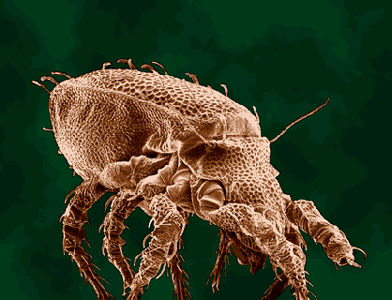Article
Midnight Sun
Midnight Sun In the Arctic in the summer, the sun shines all night long. Robert W. SERVICE had this in mind when he used the phrase in his ballad "The Cremation of Sam McGee" (1907). The expression "land of the

Enter your search term
Signing up enhances your TCE experience with the ability to save items to your personal reading list, and access the interactive map.
Create AccountArticle
Midnight Sun In the Arctic in the summer, the sun shines all night long. Robert W. SERVICE had this in mind when he used the phrase in his ballad "The Cremation of Sam McGee" (1907). The expression "land of the
"https://www.thecanadianencyclopedia.ca/images/tce_placeholder.jpg?v=e9dca980c9bdb3aa11e832e7ea94f5d9" // resources/views/front/categories/view.blade.phphttps://www.thecanadianencyclopedia.ca/images/tce_placeholder.jpg?v=e9dca980c9bdb3aa11e832e7ea94f5d9

Article
In addition to fishes, a few INVERTEBRATES, such as small CRUSTACEANS, worms and eurypterids, which are giant cousins of land scorpions, lived at the bottom of the estuary.
"https://www.thecanadianencyclopedia.ca/images/tce_placeholder.jpg?v=e9dca980c9bdb3aa11e832e7ea94f5d9" // resources/views/front/categories/view.blade.phphttps://www.thecanadianencyclopedia.ca/images/tce_placeholder.jpg?v=e9dca980c9bdb3aa11e832e7ea94f5d9

Article
Milkweed is the common name for perennial, herbaceous plants of genus Asclepias, family Asclepiadaceae (from Greek physician Asclepius).
"https://www.thecanadianencyclopedia.ca/images/tce_placeholder.jpg?v=e9dca980c9bdb3aa11e832e7ea94f5d9" // resources/views/front/categories/view.blade.phphttps://www.thecanadianencyclopedia.ca/images/tce_placeholder.jpg?v=e9dca980c9bdb3aa11e832e7ea94f5d9

Article
Millets are various, usually annual, grass (family Poaceae) crops that are often grown as cereals (ie, the seeds are harvested as grain for human consumption).
"https://d3d0lqu00lnqvz.cloudfront.net/media/media/551430a6-8d74-48fd-9f95-c75d3111ef4d.jpg" // resources/views/front/categories/view.blade.phphttps://d3d0lqu00lnqvz.cloudfront.net/media/media/551430a6-8d74-48fd-9f95-c75d3111ef4d.jpg

Article
Millipede (class Diplopoda), terrestrial, usually elongate arthropod with a small head and short antennae.
"https://www.thecanadianencyclopedia.ca/images/tce_placeholder.jpg?v=e9dca980c9bdb3aa11e832e7ea94f5d9" // resources/views/front/categories/view.blade.phphttps://www.thecanadianencyclopedia.ca/images/tce_placeholder.jpg?v=e9dca980c9bdb3aa11e832e7ea94f5d9

Article
Minerals are naturally occurring, homogeneous geological formations. Unlike fossil fuels, such as coal, oil and natural gas, minerals are inorganic compounds, meaning they are not formed of animal or plant matter. Canada is abundant in many mineral resources — mined in every province and territory — and a world leader in the production of potash, aluminum, cobalt, diamonds, gold platinum, uranium, among others.
"https://d3d0lqu00lnqvz.cloudfront.net/minerals/norandamineworker.jpg" // resources/views/front/categories/view.blade.phphttps://d3d0lqu00lnqvz.cloudfront.net/minerals/norandamineworker.jpg

Article
The American mink (Mustela vison) is a small, amphibious weasel inhabiting wetlands throughout Canada, excluding the tundra, and abundant on the BC seashore.
"https://d3d0lqu00lnqvz.cloudfront.net/media/media/29d2f58b-9ba1-424e-a879-5a0e6a0738ba.jpg" // resources/views/front/categories/view.blade.phphttps://d3d0lqu00lnqvz.cloudfront.net/media/media/29d2f58b-9ba1-424e-a879-5a0e6a0738ba.jpg

Article
Many people refer wrongly to any small fish as a minnow. Properly, minnows are small to large freshwater fish of class Actinopterygii, order Cypriniformes, family Cyprinidae.
"https://d3d0lqu00lnqvz.cloudfront.net/media/media/310caf5d-4a5d-4276-b439-7f6aa2a2cfe0.jpg" // resources/views/front/categories/view.blade.phphttps://d3d0lqu00lnqvz.cloudfront.net/media/media/310caf5d-4a5d-4276-b439-7f6aa2a2cfe0.jpg

Article
Mint belongs to the mint family (Lamiaceae, also called Labiatae), a large plant family that also includes several aromatic and ornamental plants like basil, rosemary, oregano, thyme, coleus and sage.
"https://d3d0lqu00lnqvz.cloudfront.net/media/media/5e03b322-b373-4caa-af8c-7bc6cde241d4.jpg" // resources/views/front/categories/view.blade.phphttps://d3d0lqu00lnqvz.cloudfront.net/media/media/5e03b322-b373-4caa-af8c-7bc6cde241d4.jpg

Article
Mistletoe family, Loranthaceae, includes about 30 genera and over 1000 species. It is predominantly tropical but has members in temperate regions.
"https://www.thecanadianencyclopedia.ca/images/tce_placeholder.jpg?v=e9dca980c9bdb3aa11e832e7ea94f5d9" // resources/views/front/categories/view.blade.phphttps://www.thecanadianencyclopedia.ca/images/tce_placeholder.jpg?v=e9dca980c9bdb3aa11e832e7ea94f5d9

Article
Mite is a common name for most members of the subclass Acari, a large, diverse group of tiny arachnids that also includes ticks.
"https://d3d0lqu00lnqvz.cloudfront.net/media/media/8eb04cf7-636d-460f-a5d4-bedd5bf6298d.jpg" // resources/views/front/categories/view.blade.phphttps://d3d0lqu00lnqvz.cloudfront.net/media/media/8eb04cf7-636d-460f-a5d4-bedd5bf6298d.jpg

"https://www.thecanadianencyclopedia.ca/images/tce_placeholder.jpg?v=e9dca980c9bdb3aa11e832e7ea94f5d9" // resources/views/front/categories/view.blade.phphttps://www.thecanadianencyclopedia.ca/images/tce_placeholder.jpg?v=e9dca980c9bdb3aa11e832e7ea94f5d9

Article
Mole, common name for 20-29 species of predominantly burrowing insectivores of family Talpidae restricted to Eurasia and N America. Six species occur in Canada.
"https://www.thecanadianencyclopedia.ca/images/tce_placeholder.jpg?v=e9dca980c9bdb3aa11e832e7ea94f5d9" // resources/views/front/categories/view.blade.phphttps://www.thecanadianencyclopedia.ca/images/tce_placeholder.jpg?v=e9dca980c9bdb3aa11e832e7ea94f5d9

Article
The mollusc is a soft-bodied, usually shelled invertebrate belonging to one of the largest animal phyla (Mollusca) with some 100 000 living and about 35 000 fossil species.
"https://d3d0lqu00lnqvz.cloudfront.net/media/media/06525077-c3d6-4a56-a096-d0a611b208be.jpg" // resources/views/front/categories/view.blade.phphttps://d3d0lqu00lnqvz.cloudfront.net/media/media/06525077-c3d6-4a56-a096-d0a611b208be.jpg

Article
Although Canada's coastline is extensive and contains many diverse molluscan species, the resource is economically relatively small. In 1995 nearly 200 000 t valued at $114.5 million were taken.
"https://d3d0lqu00lnqvz.cloudfront.net/media/media/75b80a2e-5358-4b29-877d-cf3ed69aa9f5.jpg" // resources/views/front/categories/view.blade.phphttps://d3d0lqu00lnqvz.cloudfront.net/media/media/75b80a2e-5358-4b29-877d-cf3ed69aa9f5.jpg
